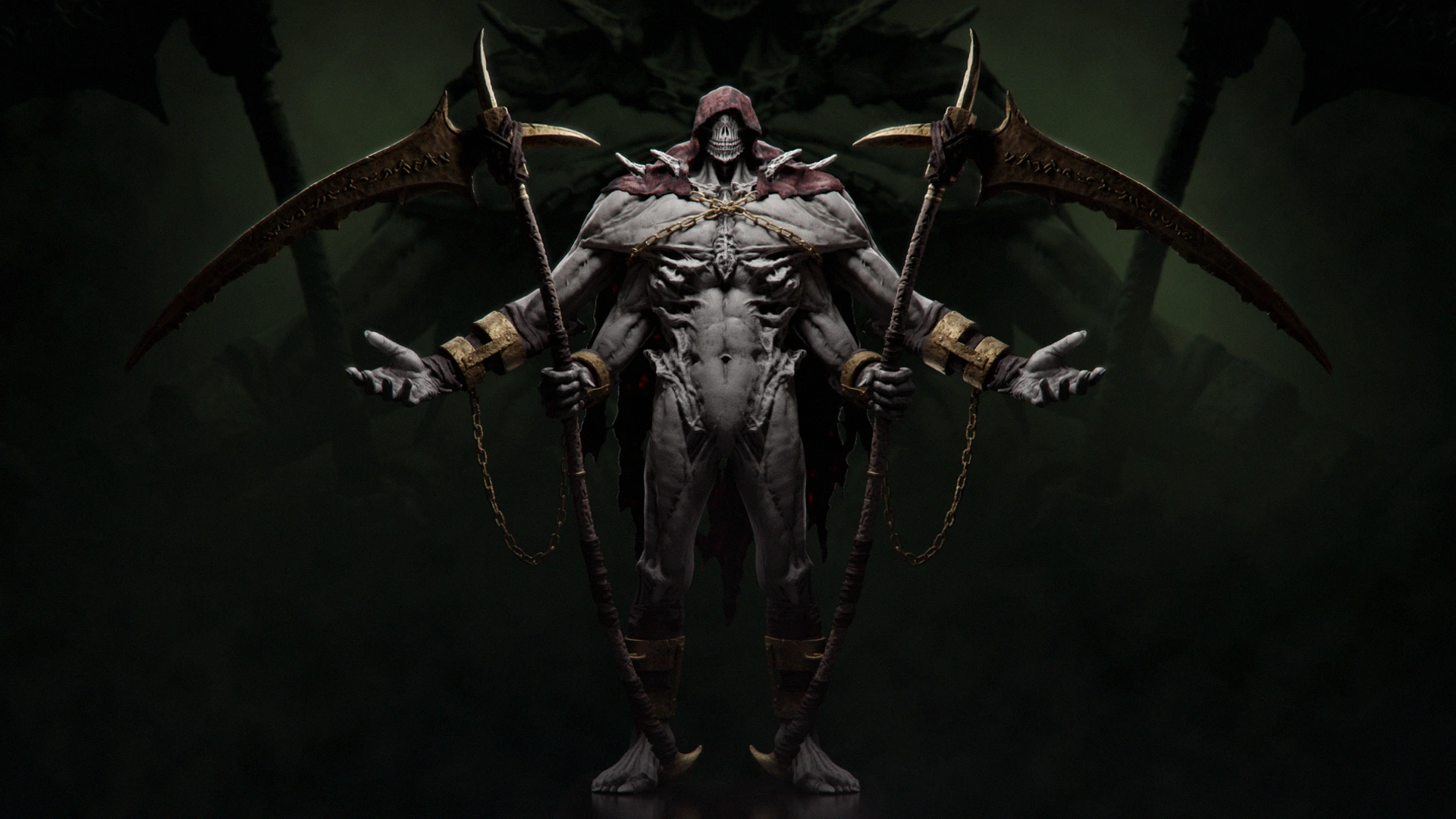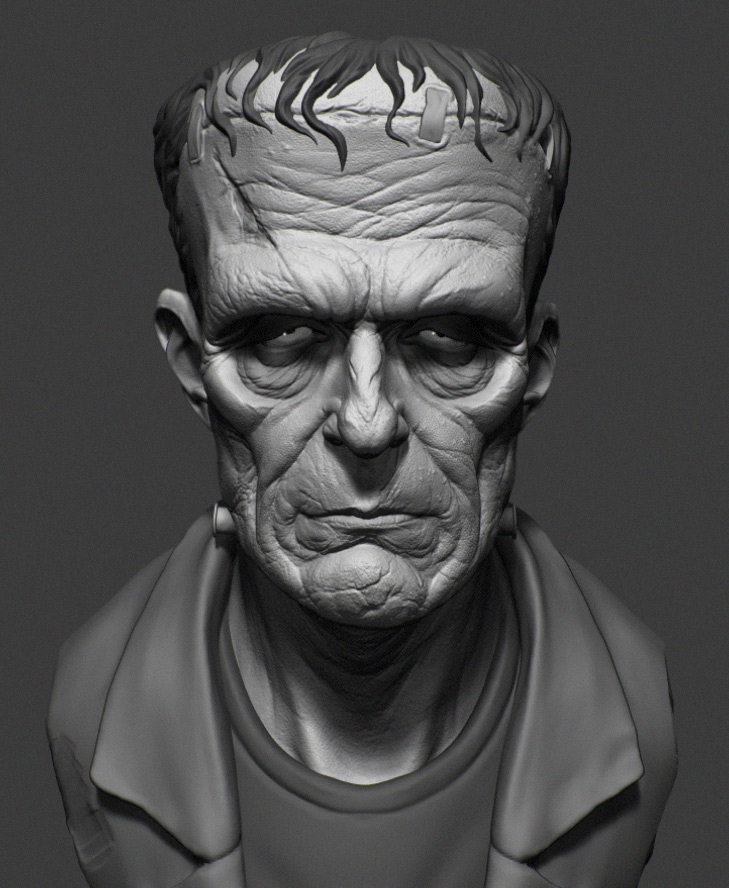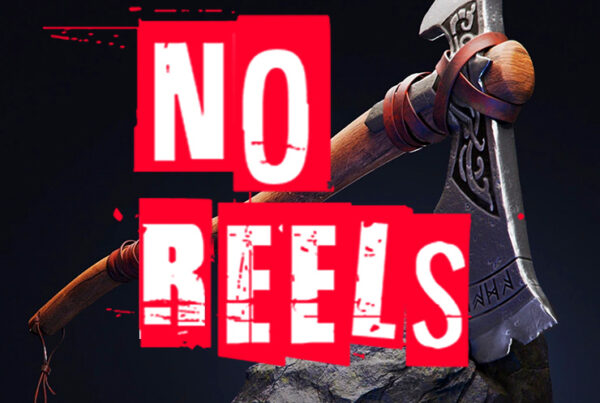Learn how to develop amazing skills without going to 3D school
For many people, going to school to become an artist simply isn’t an issue; it might be too expensive or inaccessible due to location. In this article, we’re covering how you can be successful in the creative industry by being self-taught, without being in debt for life. Everything we talk about here will also be relevant to students attending 3D schools.
Let’s get started!

Character made using the FlippedNormals Face VDMs
Build Amazing Skills
The most important part of entering the 3D industry is to be good at what you’re doing. Your skills are really the foundation for your entire career. This is what we’ll refer to as our hard skills. Hard skills are skills that are measurable and can be used for a clear purpose — as opposed to soft skills, which are more abstract, such as being a good communicator.
At the end of the day, a job is simply a way to convince people to give you money for providing a service. In order to be successful, you’ll need to be good at providing a client with a service. The better you are, the more people want your services and the more you can charge them.
Do Projects
One of the best pieces of advice I got when I was starting out was ‘Do Projects’. When you’re learning to become an artist, it’s incredibly easy to spend all your time making only doodles and tests, to the point where you have no finished pieces.
If you’re becoming a 3D artist, doing projects will also give you the added bonus of getting a more general skill set. The big studios often require specialists, so it’s tempting to specialize early on. I highly recommend that you get your foundation as a generalist before you specialize, as you’ll have a far better understanding of how everything is connected. I’ve worked with a bunch of artists who only understands their area of expertise, which sometimes makes them tricky to work with, as they don’t have much understanding of what came before and after them in the production.
An added bonus of starting out as a generalist is that most smaller studios will hire mostly generalists. As you’re getting into the field, chances are that your first job will be in a local studio — and with a well-rounded skill set, your chances of getting your first job just increased a lot.
Watching Tutorials
I highly recommend that you watch as many tutorials as you can possibly come across as a beginner. This will teach you a lot useful of skills in a pretty short amount of time.
Don’t be afraid of spending money on training. There are a lot of free tutorials available, but there’s a reason why premium tutorials exist. The same is true for longer mentorships and courses, which might last weeks and months. These are usually more costly, at around $400–800, but they can also provide you with incredible learning. If you want to become a concept artist, having access to feedback from a world-leading artist who will teach you their ways for 8 weeks is something that might transform you as an artist. If you attend a long course, dedicate yourself fully to it.
 The end result from Creating a Full Character in ZBrush
The end result from Creating a Full Character in ZBrush
Here’s a list of some excellent tutorial sites:
- FlippedNormals — Our curated marketplace. Huge variety of CG content
- FlippedNormals Exclusives — Our own Exclusive tutorials and resources
- PluralSight — Good for Beginners when learning software
- FXPHD — Advanced VFX and 3D tutorials
- Schoolism — Fantastic resource for painting and concept art
- The Gnomon Workshop — Industry professionals doing advanced tutorials
- AnimationMentor — One of the best online character animation schools
Art Fundamentals
No matter what happens with technology, there are certain universal and timeless truths in art. These are what we call art fundamentals. If you want to make a living doing art, I highly recommend that you spend a lot of time getting a foundation. This will serve you for the rest of your career.
If you focus only on the technical operation of 3D software, it’s easy to fall into the trap of becoming a pure technician, which often is rather easy to replace. By getting a solid foundation in fundamentals, you’ll have a strong creative base which will put you miles ahead of your competition.
Art fundamentals include:
- Anatomy and figure drawing
- Color theory
- Compositions
- Lighting
- Shape language
- Animation principles
Tools Are Important
When it comes to CG, the tools matter a lot. While core concepts are always important, underestimating the importance of good tools is dangerous. CG (computer graphics) is a technical field, where the quality of the work has increased directly with technological advancement.
Let’s say that you want to model a costume in 3D. One way is to model them up using regular poly modeling techniques. While this method works, it requires an insane amount of skill and time. A better way would be to take advantage of the simulation capabilities of the computer and use a tool like Marvelous Designer, where you can make amazing clothing in an easy and fast manner. Somebody with a few months of experience with Marvelous Designer will probably make way better clothing than somebody with 10 years of experience doing it by hand — simply due to the technology.
CG is a field where technology is progressing incredibly fast, so it’s important to stay up to date on the latest trends and software. Sometimes a new plugin comes out which speeds up your work by 2x. If you’re on top of the tech, you’ll have a very real competitive advantage.
This said though, don’t spread yourself too thin. If you’re learning CG, try to have one main 3D software which you use as your base. Learning new software takes a lot of time so you want to make sure that you have one software you know really well.
Get a Job, You Hippie
You start to really learn the moment you get a job, as this is when your skills are really put to the test. You’re forced out of your comfort zone constantly, and you now have to deal with the real pressure of deadlines and clients. While doing personal projects, you can often simplify certain parts you’re unsure how to do properly. When working professionally, you need to give the client exactly what they request. If you don’t know how to do the job, you’ll simply have to figure it out.
Another huge advantage of working is that you’ll have colleagues who will most likely be far more experienced than you. A month of working will teach you more than a year of school.
In the beginning, I recommend that you find anything which is remotely relevant to the field you want to work in, as any experience is most likely better than none at all. While my career has mostly been as a character artist in film, I got started as an intern at a local commercials studio, working as a generalist and lighter. While the experience I got wasn’t always directly relevant to what I wanted to ultimately do, I learnt a whole bunch about 3D, the creative industry and how to present myself as a professional. It was a really important stepping stone in getting to where I ended up.

Frankenstein's Monster sculpted in Character Concept Sculpting in ZBrush
Soft Skills
The second pillar of your career is your soft skills. This is how you deal with other people and how you’re perceived as a person. A lot of artists seem to completely forget that there’s more to a job than the actual task you’re doing. Being a good team player and an efficient communicator is one of the most valuable skills you can bring to the table. A talented yet impossible-to-work-with person can seriously destroy the efficiency of a team.
There’s very little room for ego in this field.
Exposure
Having an amazing portfolio is no good if nobody knows about you. Make sure that you have an ArtStation portfolio that is always up to date.
Next to having a portfolio, I highly recommend that you’re active on social media, such as Instagram and Twitter, as there are large art communities there. Even if your work isn’t the greatest yet, start posting and get used to putting yourself out there. It really helps you to deal with feedback and to give you thick skin. If you’re consistent about posting your art (and improving it), you’ll see that over time, you’ll get a following and you’ll connect with like-minded people, which can be a huge advantage. In this field, networking is one of the most common ways to get freelance gigs and full-time jobs. This leads us to the next point!
Don’t Be a Dick
This can't be stressed enough. Don't. Be. A. Dick. The creative industry is tiny, way smaller than you think. If you get a bad rep, this could seriously harm your career, as word spreads like fire. As an example, in London, there are pretty much only 5 big VFX studios (ILM, MPC, DNEG, Framestore, and ILM), and most people working there have been to at least one of the other studios, if not more. Once you start working, you’ll soon get friends in all the other studios, and word spreads quickly.
Your reputation is unfortunately not something you can directly control, it’s the total sum of everything people are saying about you. Essentially, how you are perceived is a result of your consistent behavior over longer periods of time.
Conclusion
You can be incredibly successful in the creative field as a self-taught artist, and going to school is in no way a requirement to get a job. By focusing on your core art skills and on learning modern tools, you’ll be able to really gain a competitive and long-lasting advantage. Next to it, by taking soft skills and your health seriously, you’ll be able to thrive in a team and have a long career. It’s really a fun field to work in and if you’re dedicated and consistent, you’ll be able to have a fantastic career.
If you’re interested in more content from FlippedNormals, we have a bunch of videos on YouTube covering a wide variety of topics, and a ton of amazing training and resources on the Marketplace.









